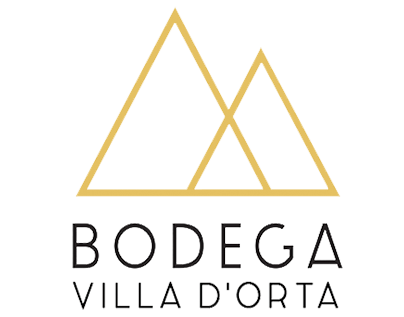Fine wines are often associated with an appellation. Of these, there are young wines: vino joven. On the label of the young wines, next to the trade name includes the name of the appellation with the mention Denominación de Origen, the Designation of Origin. The year of harvest or vintage is also on the bottle. A label affixed to the back of the bottle usually bears the seal of the Denomination of Origin. For wines to be Bio certified, a third label is placed on the back of the bottle with a production number as well as the seal of the Council regulating the Bio certification. In SOMONTANO, it is the Committee Aragonés de Agricultura Ecologica, which regulates and certifies BIO wines.
Young wines (Joven) are wines to be consumed within a maximum of two or three years of harvest. They are designed to be consumed young, there are called: Joven.
A higher category of wine is classified as vinos Crianza, those wines are aged in oak barrels, called envejecidos, which means "old". Those aged wines are traditionally classified into three categories, depending on conditions and aging times of each wine. There are general rules for these basic requirements. However, producers can submit their products for aging for longer periods of time. On the labels of these aged wines, besides the date of harvest (vintage), the commercial name of the wine, the name of the appellation, the seal of the Designation of Origin, you will find one of the following:
- Crianza: wine that is aged in oak barrels (3 years old with a minimum of 12 months in oak barrels and bottled for two years).
- Reserva: in French 'Réserve' (4 years old with a minimum of 24 months in oak barrels and bottled for two years).
- Gran Reserva: in French "Grande Réserve" (5 years old with a minimum of 36 months in oak barrels and bottled for two years).
Other fine wines have specific appellations, though generally associated with a Designation of Origin. This is the case of the Cava, the Spanish sparkling wines (Vinos Espumosos), including the largest share of production witch is called Cava. The majority of the production of Cava is made in Catalunya, near Barcelona. There is however a small production of sparkling wines sold in the rest of Spain.
D.O. Cava
Our Cava (DO Cava) is a sparkling wine, RESERVA, BRUT NATURE, i.e. a sparkling wine (second fermentation) without any residual sugar (Brut Nature). The Reserva Cava must remain at least 12 months in the cellar before being disgorged and released from the deposit. The grapes used for the elaboration of Cava wines in Catalonia are usually: the Xarel.lo, Macabeo and Parellada. Wines made with these grapes in Catalunya are usually mild and low in alcohol... Ideal for Cavas!
Cava wines can be white or rosé (rosado), and are offered with several levels of residual sugar: Brut Nature (driest), Brut (very dry), Seco (dry), Semi-seco (half dry) and Dulce (sweet)...
There is a story
The sun of Spain in a bottle
In the year 218 BC, the Roman legions began the occupation of the Iberian Peninsula and brought with them the cultivation and their knowledge of winemaking. Nearly two millennia later, around 1863, when the phylloxera began to decimate the vineyards of France, a Frenchman from the region of Bordeaux who had lost his vineyard to the insect pest and was seeking a fertile land to cultivate the vine, emigrated to Barbastro, at the foot of the Pyrenees, in Aragon, Spain. He took his knowledge with him and his French varietals: Cabernet Sauvignon, Merlot and Chardonnay which are the main varieties grown in the SOMONTANO region.
A Montreal native in Aragon
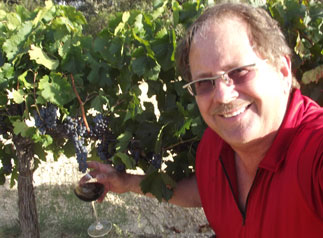 |
Villa d'Orta is the combination of a Montrealer and of two families from Aragon, Spain; the marriage of two cultures separated by the Atlantic Ocean: Quebec and Aragon, Canada and Spain. Alain Bellemare, winemaker originally from Montreal, Canada, bought nearly 30 acres of certified organic (BIO) vines, in 2011. One year later, he meets Ana and Tonio CAÑELLAS, which have a small family Bodega and 7.5 hectares of vineyards on the road called Barbastro - Alquézar and, in the spring of 2013, he joined them and buys a stake in Bodega Villa Orta... This is the beginning of the adventure in Aragonese soil! |
There is a terroir
Villa d'Orta is also a vineyard of 30 hectares of certified agrobiological vines (Organic/BIO) located at the foothills of the Pyrenees, hence the name of the appellation of origin of the region: D.O. SOMONTANO (Denominacíon de Origen SOMONTANO). The vineyards of Cabernet Sauvignon, Merlot and Tempranillo were planted between 1999 and 2000 in Laluenga and Barbuñales, two pueblos (villages) located within a radius of fifteen kilometers from Barbastro. In addition, in a pueblo called Huerta de Vero, the bodega owns 7.5 acres of Cabernet Sauvignon, Merlot, Tempranillo and Moristel which were planted more than thirty years ago; the varietal Moristel is unique to Aragon, Spain. Country of abundant sun, the wines that are elaborated in SOMONTANO are full-bodied, of a deep ruby colour, and have on average 13.5 % alc./Vol... And more!
There is a saying in Aragon: if the wine you drink does not make at least 13 % of alcohol, it is not a SOMONTANO wine!
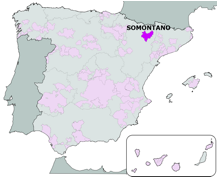
(By car: Barbastro is 70 km away from France through the Pyrenees; about 2 hours from Lannemezan; 3 hours and 15 minutes from Toulouse. In Spain, our Bodega is 25 minutes away from Huesca; and 2 hours 30 minutes from Barcelona Airport [Barcelona-El Prat, BCE] by A-2 and then A-22). From Huesca, by train (Hy-speed train made by Bombardier!) 2 hours and 15 minutes away from Madrid...

Elaborated and bottled by Bodega Villa Orta RE 41012 HU
Huerta de Vero, Huesca, España
www.bodegavilladorta.com
Vineyard
Terroir: semi-arid climate with low rainfall, the soil is made of sandstone, clay, limestone and alluvial deposits. These are often rocky soils with low fertility, but with good drainage. The altitude of the vineyards varies between 425 and 450 meters.
Grapes: 30% Cabernet Sauvignon, 15% Merlot, 25% Tempranillo et 30% Moristel.
Average age of vines: 35 years
Yield: 30 HL / ha
Grade: 13,5%
Total acidity: 3.17
PH: 3.49
Free SO2: 15
Residual sugars: 2.1
Year: 2012
Appellation: D.O SOMONTANO
Winemaking
The grapes are handpicked for Moristel, Cabernet Sauvignon and Merlot varieties, mechanically harvested for Tempranillo. The grapes are de-stemmed. Fermentation takes place over a period of about 15 days at 18 C during the first 3 days, thereafter at 23 C for a week and at 29 C in the ultimate week. 4 daily pumping with intake of oxygen allow for complete fermentation.
Tasting
TINTO JOVEN: Young red wine (Tinto which means red and Joven, young) elaborated with Cabernet Sauvignon (which brings acidity and ability to age in oak and in the bottle), Merlot (medium body wine known for its softness, colour and freshness), Tempranillo (ruby red colour commonly blended with other varieties), and Moristel (a unique variety found only in Aragon that adds youthful exuberance, body and colour to the wine). The TINTO JOVEN is a ruby color wine of medium intensity with aromas of blackberry and violet petals. This wine is very pleasant in the palate with dominant flavors of cherry and plum with an elegant, slightly tannic, finish. A fullbody red wine ideally served with red meats, strong cheeses, pasta with tomato sauce...
Serve at 18 C.

Elaborated and bottled by Castelo de Pedegrosa R.E. 7279 B for Bodega Villa Orta RE 41012 HU
Huerta de Vero, Huesca, España
www.bodegavilladorta.com
Vineyard
Terroir: The climate is Mediterranean. The vineyard is located in Sant Sadurní, capital of the CAVA denomination. 22 hectares of vineyards is grown in the Alt Penedes, prime territory for the cultivation of the vine. The soils are mainly clay. On the heights, there are some limestone areas with poorer and weaker yields soils. The terroir benefits from the influence of the sun and of the Mediterranean Sea. The traditionnal grapes grown for CAVA (sparkling) wines are Xarel.lo, Macabeo, Parellada and Chardonnay .
Grapes: Made with traditional varieties for CAVA; (40%) Xarel.lo, (35%) Macabeo, and (25%) Parellada.
Average age of vines: 35 years
Yield: 50 HL / ha
Grade: 12,05%
Total acidity: 4.9
Free SO2: 14
Residual sugars: 1.4 (Brut Nature which means without adding any sugar)
Year: 2010
Appellation: D.O CAVA (Equivalent to Champagne, in France)
Vinification
Handpicked grapes. First fermentation in stainless steel tanks at 14 C for about two weeks. In the spring of the year following the harvest, the wines are assembled and bottled for the second fermentation in bottle (Méthode Champenoise / Traditionnal Method) and are kept in the cellar on lees for two years before being disgorged (the cleaning of the deposit in the bottle after 2nd fermentation). This Cava is a CAVA BRUT Nature RESERVA, (ie without addition of sugar during scouring).
CAVA (Sparkling wine in Catalunya) BRUT Nature (no sugar added) RESERVA (at least 2 years on lees before commercialization).
Tasting
This CAVA (white sparkling wine) is made from the best grapes of the Penedès region, in Catalunya, with a second fermentation in the bottle (traditional method) for 24 months in the dark, in the silence and stillness. With a long finish and a hint of acidity, this Brut Nature Reserva will please most sparkling wine enthusiasts.
Serve at 8 C.

Huerta de Vero, Huesca, España
www.bodegavilladorta.com
Vineyard
Terroir: semi-arid climate with low rainfall, the soil is made of sandstone, clay, limestone and alluvial deposits. These are often rocky soils with low fertility, but with good drainage. The altitude of the vineyards varies between 425 and 450 meters.
Grapes: 85% Cabernet Sauvignon, 15% Merlot.
Average age of vines: 14 years
Yield: 40 HL / ha
Grade: 13,5%
Total acidity: 4.3
PH: 3.24
Free SO2: 26
Residual sugars: 1.8
Year: 2012
Appellation: D.O SOMONTANO
Winemaking
Mechanically harvested. The temperature of the must is maintained at 18 C. After approximately 24 to 48 hours of contact with the skins, the tank is bleeded and the pink rosé coloured juice is transferred into another vessel. We then lower gradually the temperature to 14 C. Fermentation takes place over a period of about 15 days at 14 C during the first week and then to 18 C during the last week.
Tasting
Medium depth rosé colored wine with aromas of concentrated blackberry with a touch of violet petals. Low in acidity, the palate is pleasant with flavors associated with cherries and plums which gives way to a light an elegant finish. Excellent terrace wine as a stand alone... Good tasting aperitive to be paired with soft cheeses, tapas and entrées, ROSADO will replace any white wine and can accompany white meats, poultry, salads and game birds.
Serve at 12 C.

Huerta de Vero, Huesca, España
www.bodegavilladorta.com
Vineyard
Terroir: semi-arid climate with low rainfall, the soil is made of sandstone, clay, limestone and alluvial deposits. These are often rocky soils with low fertility, but with good drainage. The altitude of the vineyards varies between 425 and 450 meters.
Grapes: 85% Chardonnay, 15% Macabeo.
Average age of vines: 20 years
Yield: 40 HL / ha
Grade: 14%
Total acidity: 3.4 g/l
PH: 3.39
Free SO2: 34 mg/l
Residual sugars: 0.65 g/l
Year: 2013
Appellation: D.O SOMONTANO
Winemaking
Mechanically harvested. The temperature of the must is maintained at 18 C in stainless steel tanks. After about 72 hours, we gradually lower the temperature to 14 C. Fermentation takes place from this time over a period of about 15 days at 14 C during the first week, thereafter up to 18 C during the last week.
Tasting
With a brilliant gold and lime color, this delightful white wine scents of exotic fruits, citrus, apple and peach. Well balanced with moderate acidity, Mi Blanco is an easy to drink wine with a refreshing and delicate palate. A white wine with alot of body... Serve with white meats, creamy sauces, fish and poultry. A great wine with cheeses or as an aperitive.
Serve at 14 C.

Elaborated and bottled by Bodega Villa Orta RE 41012 HU
Huerta de Vero, Huesca, España
www.bodegavilladorta.com
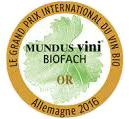
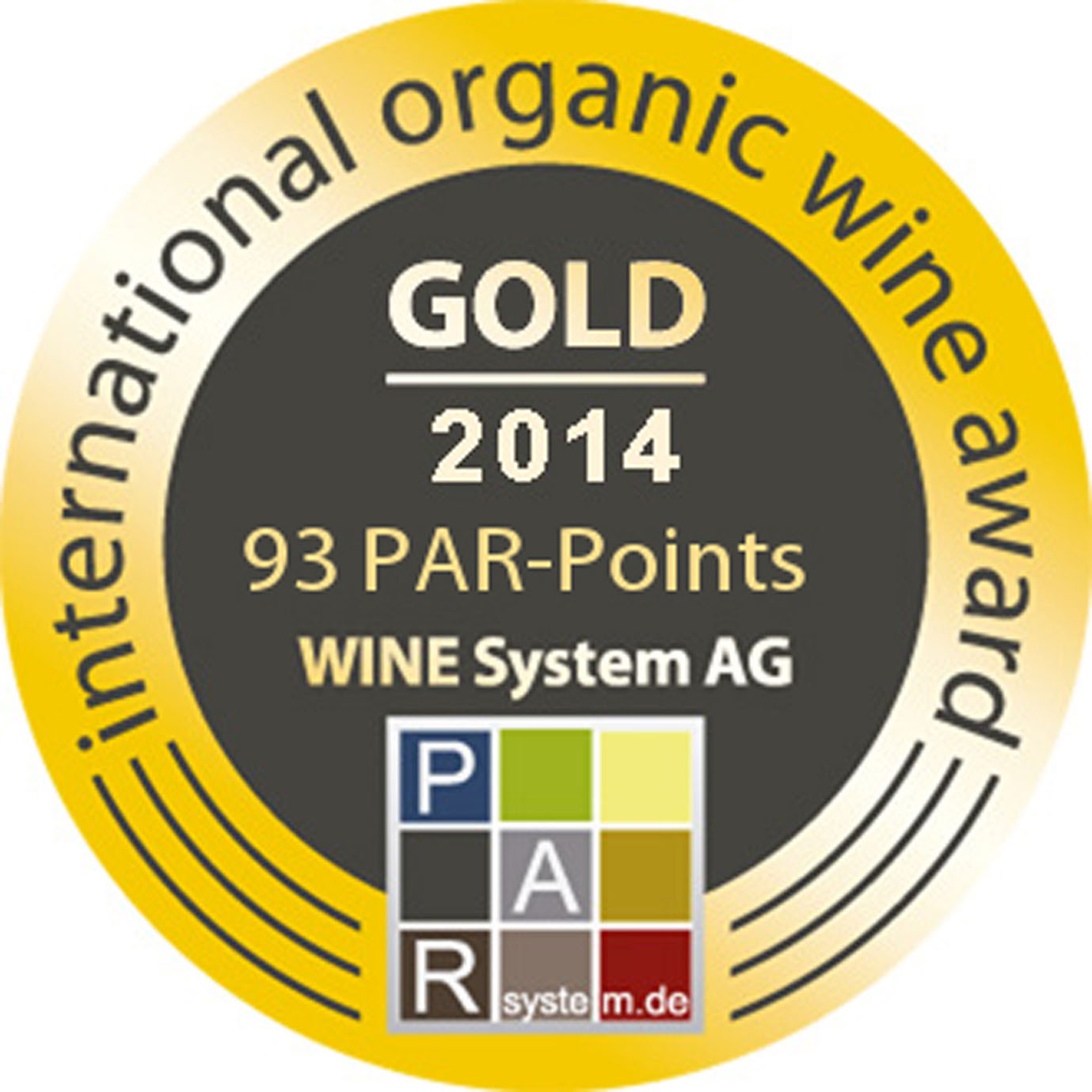
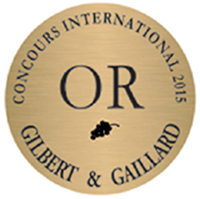
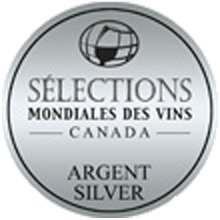

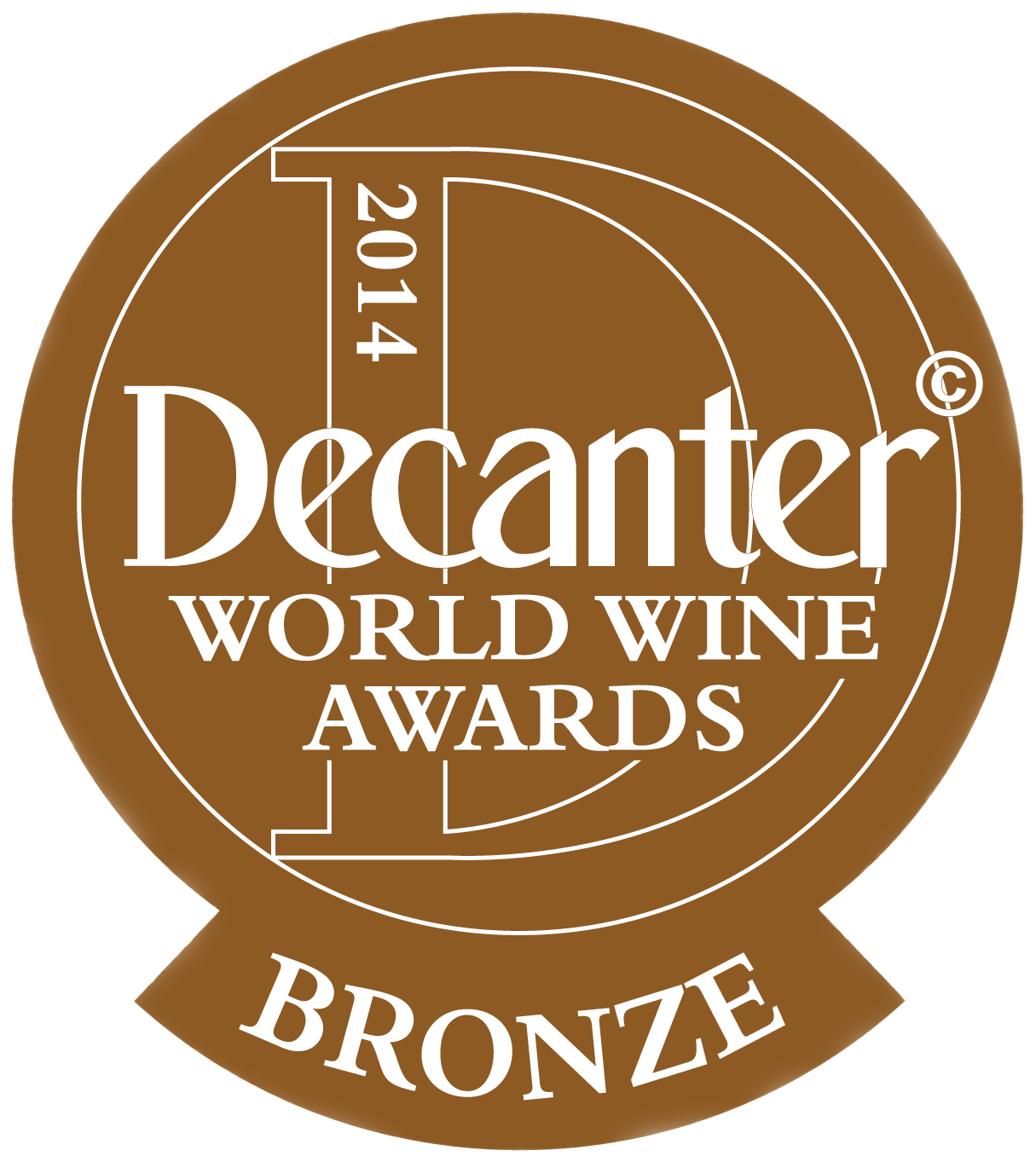
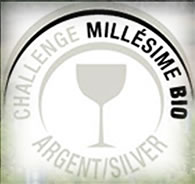

Vineyard
Terroir: semi-arid climate with low rainfall, the soil is made of sandstone, clay, limestone and alluvial deposits. These are often rocky soils with low fertility, but with good drainage. The altitude of the vineyards varies between 500 and 517 meters.
Grapes: 67% Cabernet Sauvignon, 33% Merlot.
Average age of vines: 15 years
Yield: 30 HL / ha
Grade: 14,3%
Total acidity: 3.17
PH: 3.49
Free SO2: 28
Residual sugars: 2.8
Year: 2013
Denomination: D.O SOMONTANO
Winemaking
The Cabernet Sauvignon and Merlot grapes are manually harvested. The grapes are then de-stemmed. The fermentation occurs naturally, without adding yeast (we use the natural yeasts which reveals the unique taste of our terroir). Fermentation takes place over a period of about 15 days at 18 C during the first 3 days, and thereafter at 23 C for a week and at 29 C during the last days. 4 daily pumping with intake of oxygen allow for complete fermentation. Once the wine is finished, we transfer the young wine in the press. After pressing the grapes, the wine is transferred into French oak barrels to age for at least 6 months in the cellar, with a minimum ratio of at least 30% new barrels.
This is an organic wine made without addition of any chemicals during the elaboration, the way our ancestors use to make wine, the old fashion way. Organic wine is a nutrient and, used with moderation, helps reduce bad cholesterol and give our body the anti-oxidants needed to help blood circulation, among other benefits. A glass of organic red wine a day keeps the doctor away... Enjoy!
Tasting
Full flavoured wine of Spain, our BIO red wines are aged in barrels for a minimum period of 6 months and thereafter gradually made available to the public in the following months. Of ruby color, our Organic (BIO) wine is intense with a thin garnet rim. On the palate, there is a combination of very ripe black fruits and spicy aromas of toasted oak. This well-balanced and well structured wine is pleasant to the palate with a long finish.
Villa d'Orta BIO is an organic wine (no addition of chemicals is allowed in the wine in order to alter its natural flavour or apperance) certified by the Committee of Agriculture of Aragon and bares a special label and serial number to that effect. Only sulfites were added for conservation in accordance with the Canadian law governing wines sold in Canada.
This organic wine is perfect for red meat, game, pasta and strong cheeses.
Serve at 18 C.

Huerta de Vero, Huesca, España
www.bodegavilladorta.com
Vineyard
Terroir: semi-arid climate with low rainfall, the soil is made of sandstone, clay, limestone and alluvial deposits. These are often rocky soils with low fertility, but with good drainage. The altitude of the vineyards varies between 425 and 450 meters.
Grapes: 30 % Cabernet Sauvignon, 15 % Merlot , 25% Tempranillo and 30% Moristel.
Average age of vines: 35 years
Yield: 30 HL / ha
Grade: 13,5%
Total acidity: 3.13
PH: 3.13
Free SO2: 32
Residual sugars: 2.7
Year: 2009
Appellation: D.O SOMONTANO
Winemaking
Handpicked Moristel and Cabernet Sauvignon grapes, mechanically harvested for the Merlot and Tempranillo. The grapes are de-stemmed. Fermentation takes place over a period of about 15 days at 18 C during the first 3 days, thereafter at 23 C for a week to finish at 29 C in the last days of fermentation. 4 daily pumping with intake of oxygen allow for complete fermentation. Once the wine is finished, we transfer the young wine in the press. After pressing the grapes, the wine is transferred into French oak barrels to age for at least 12 months in the cellar, with a minimum ratio of at least 30% new barrels.
Tasting
Full-body wine of Spain. The CRIANZA wines are aged in barrels for a minimum of six months and can not be marketed until at least 2 years. Intense ruby color with a thin garnet rim. In the palate, there is a combination of very ripe black fruits and spicy aromas of toasted oak. This is a well-balanced and well structured wine with a lasting finish. At our Bodega, we age our Crianza for one year in French oak barrels (with a ratio of 30 % in new barrels), then for another 12 to 24 months in bottle. This wine is perfect for red meat, game, pasta and strong cheeses. Serve at 18 C. The use of a decanter will allow this wine to breathe.

Huerta de Vero , Huesca , España
www.bodegavilladorta.com
Vineyard
Terroir: semi-arid climate with low rainfall, the soil is made of sandstone, clay, limestone and alluvial deposits. These are often rocky soils with low fertility, but with good drainage. The altitude of the vineyards varies between 425 and 450 meters.
Grapes: 30 % Cabernet Sauvignon, 15 % Merlot , 25% Tempranillo and 30% Moristel.
Average age of vines: 14 - 35 years
Yield: 30 HL / ha
Grade: 14,02%
Total acidity: 3.51
PH: 3.48
Free SO2: 31
Residual sugars: 2.65
Year: 2008
Appellation: D.O SOMONTANO
Winemaking
The Moristel, Cabernet Sauvignon, Merlot and Tempranillo are handpicked. The grapes are then de-stemmed. Fermentation takes place over a period of about 15 days at 18 C during the first 3 days, thereafter at 23 C for a least a week and then we allow fermentation to complete its process at 29 C in the last few days. 4 daily pumping with intake of oxygen allow for complete fermentation. Once the wine is finished, we transfer the young wine in the press. After pressing the grapes, the wine is transferred into French oak barrels to age for at least 24 months in the cellar, with a minimum ratio of at least 30% new barrels.
Tasting
Extremely powerfull wine... This Reserva reveals a powerful nose with red fruit combined with spices such as pepper and nutmeg. Intense purple color, slightly spicy and well structured from beginning to end with a lingering finish: a wine made with the best grapes from our less productive vineyards (poor rocky soil and little water fall equals low yield and concentration of flavor). This wine is perfect for red meat, game, pasta and strong cheeses. Serve at 18 C. The use of a decanter will allow this wine to breathe and fully express itself.
The sun of Spain in a bottle
If you saver full-flavor and fantastic wines, indulgently well price wines, you need only to remember one name: Villa d'Orta.
Available at your local wine store in ALBERTA
Only available in Private Importation in Quebec
¡España por favor!
